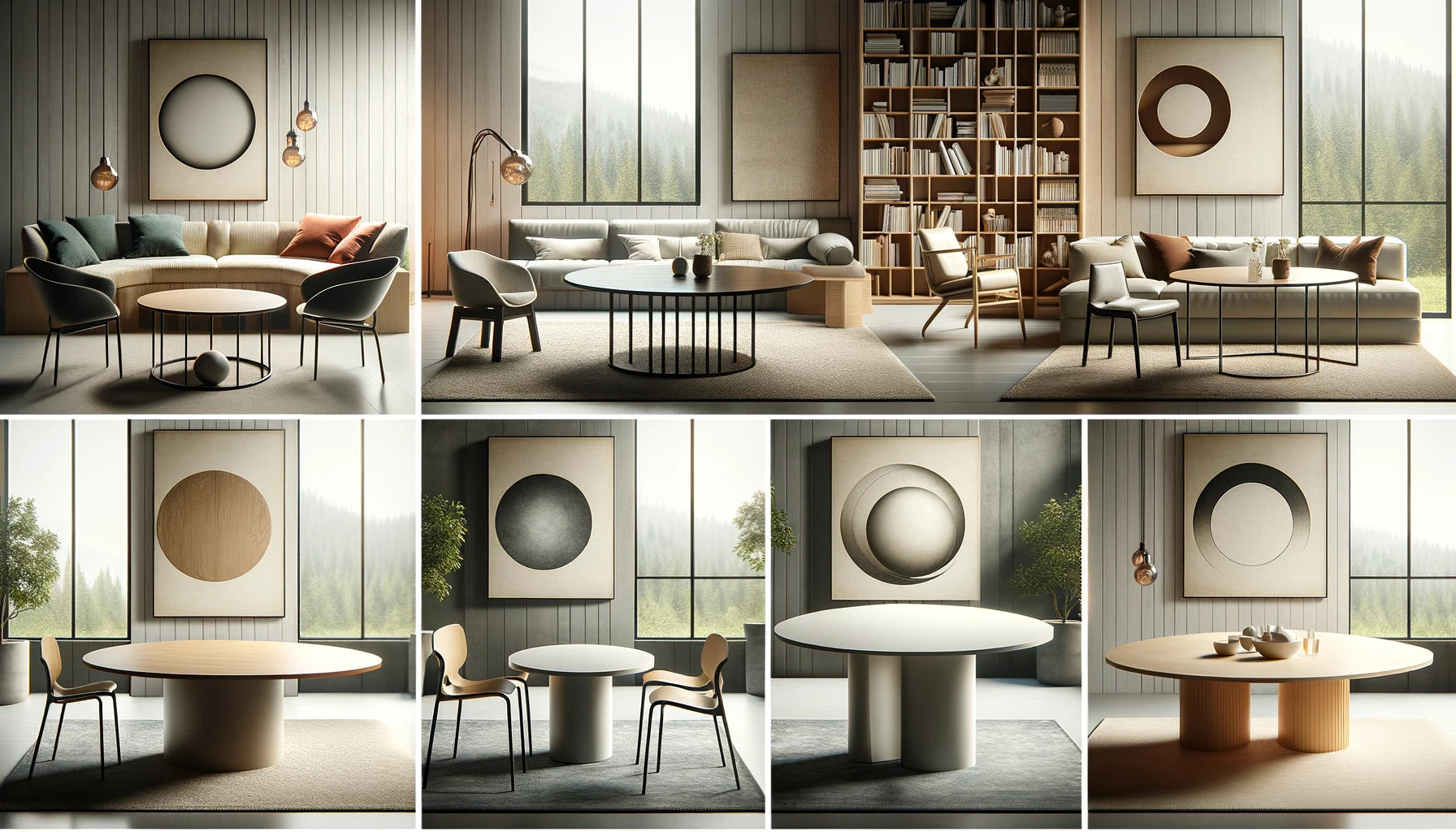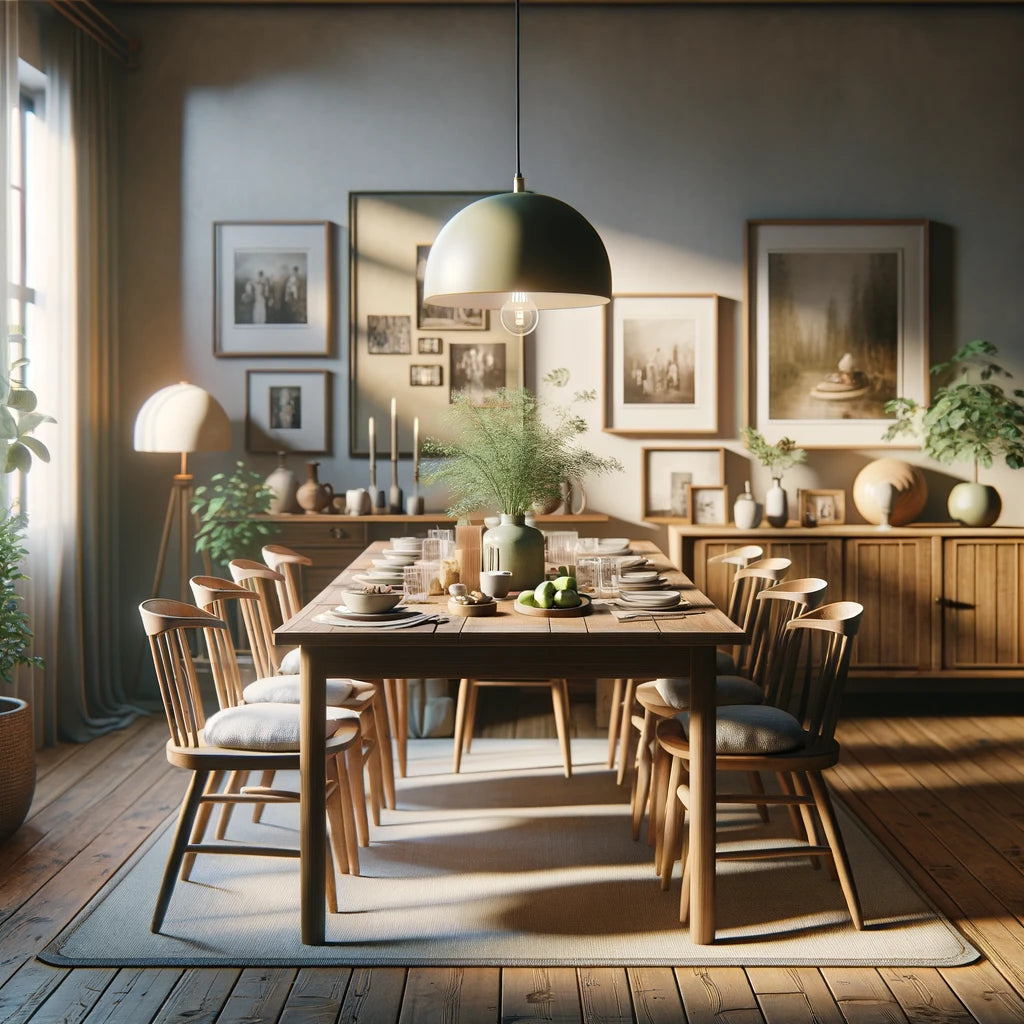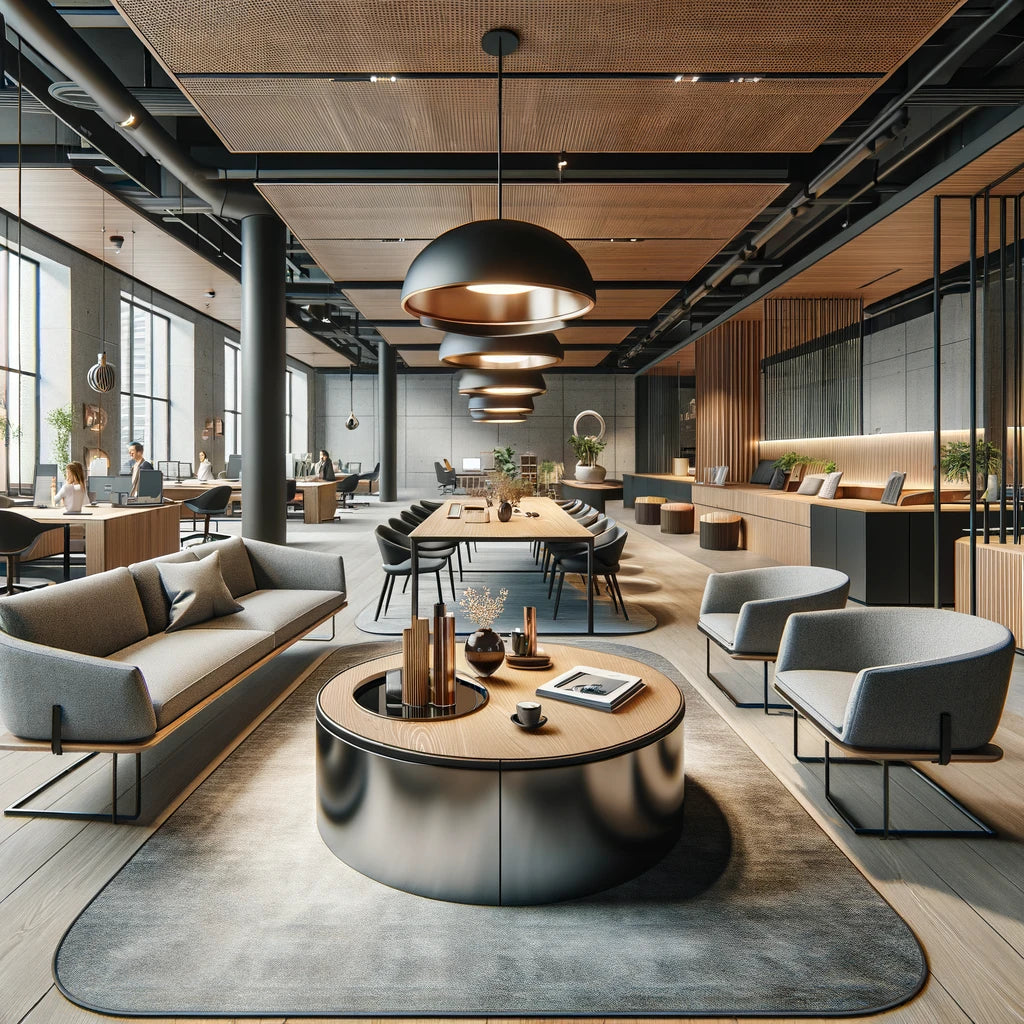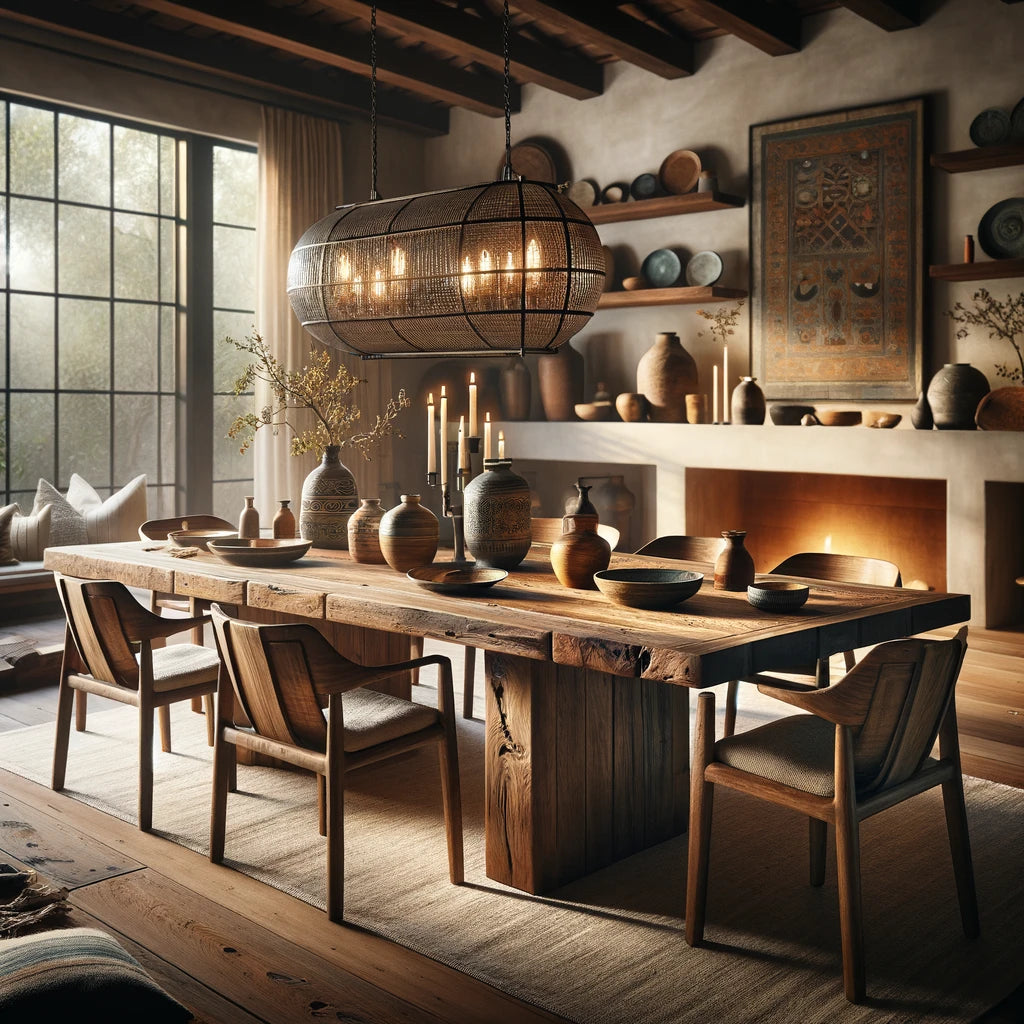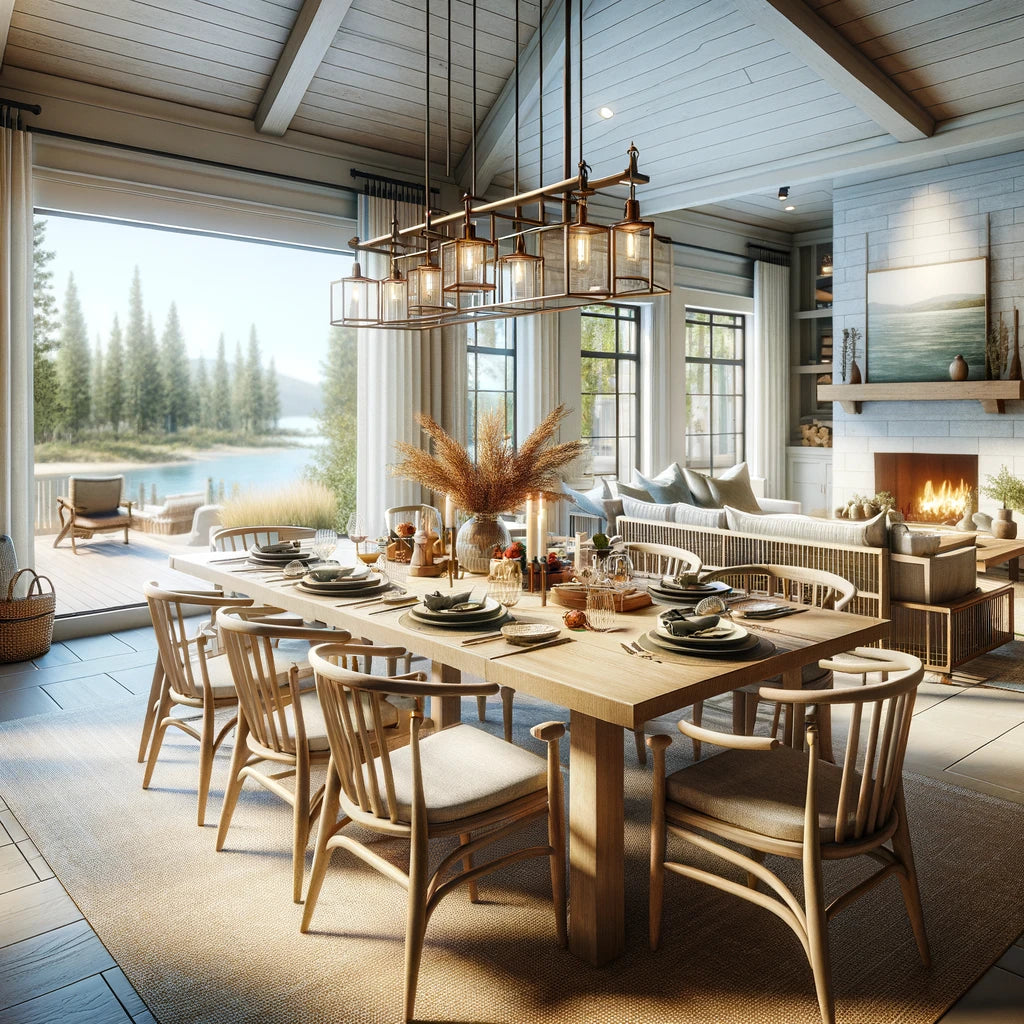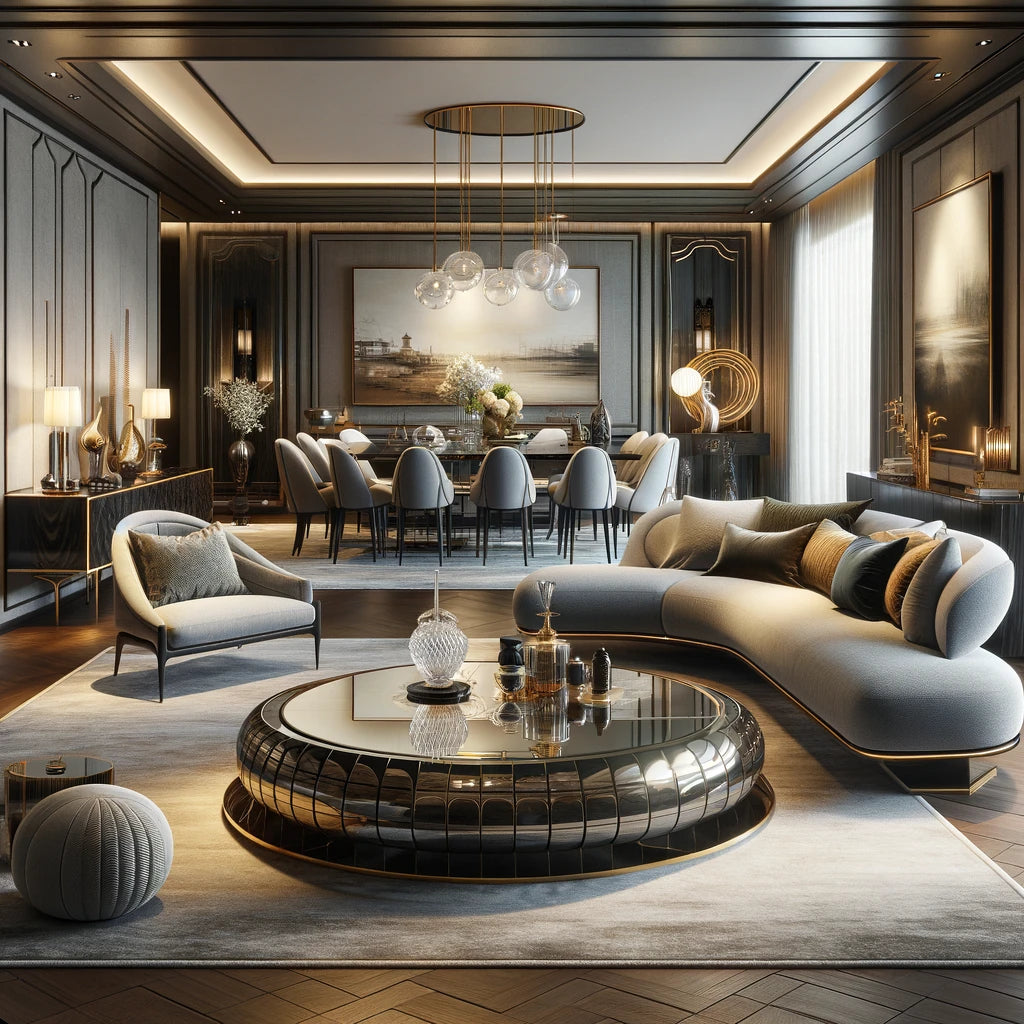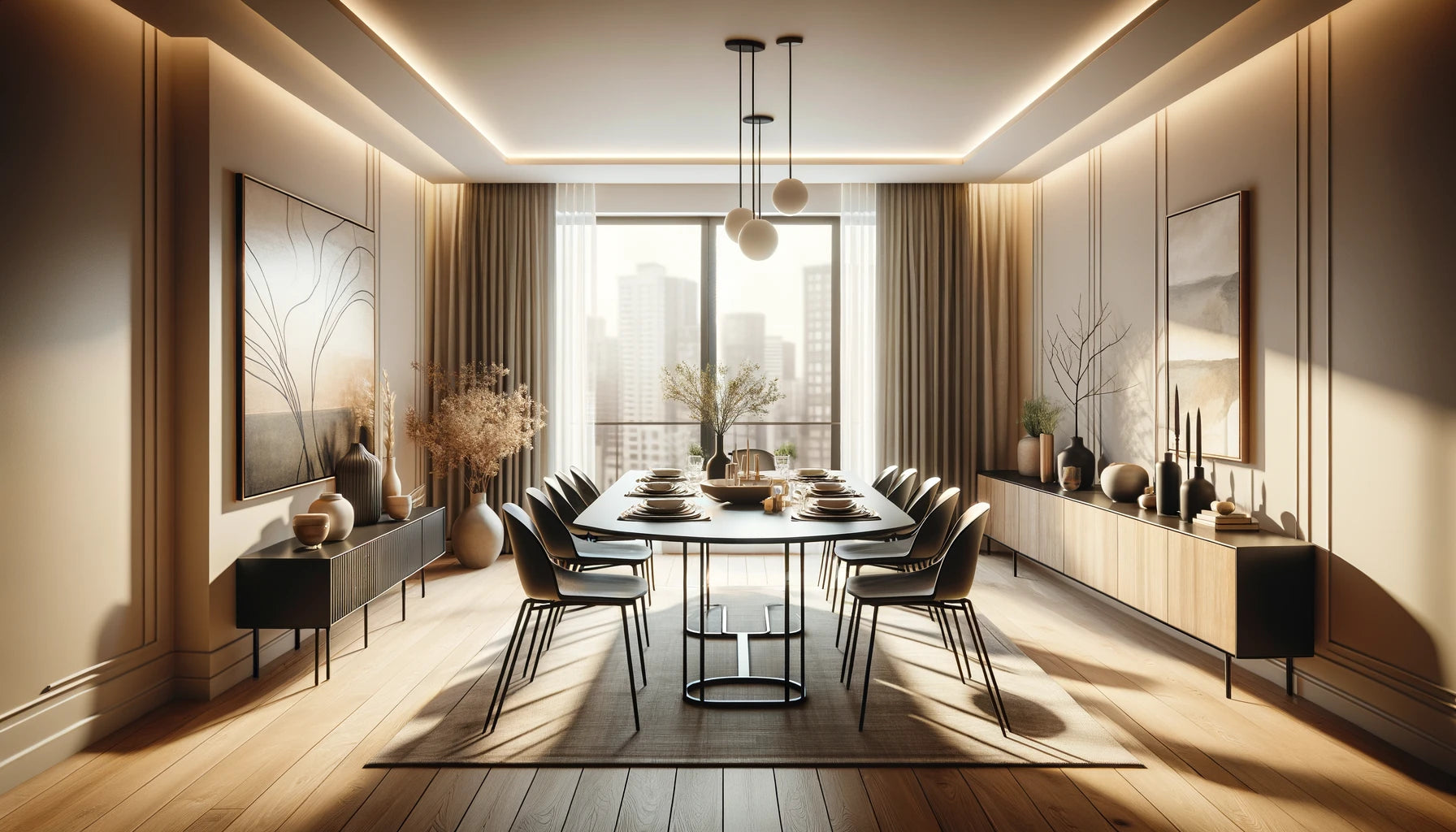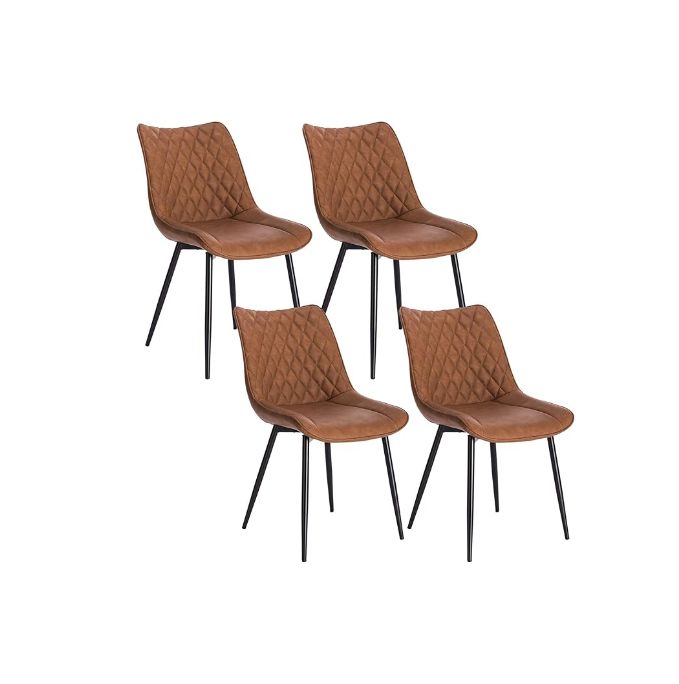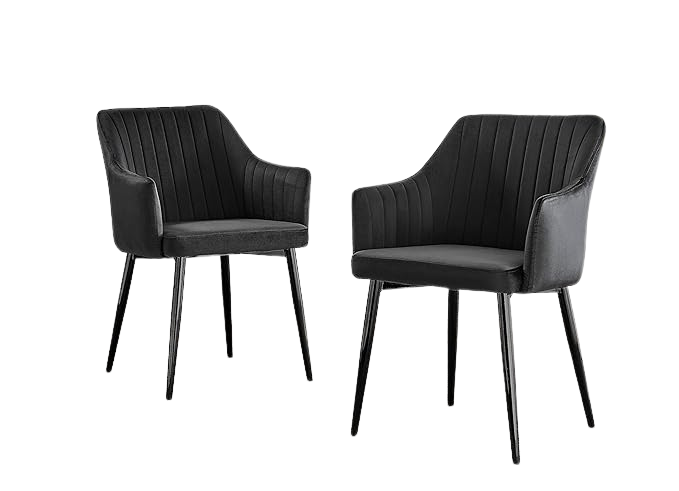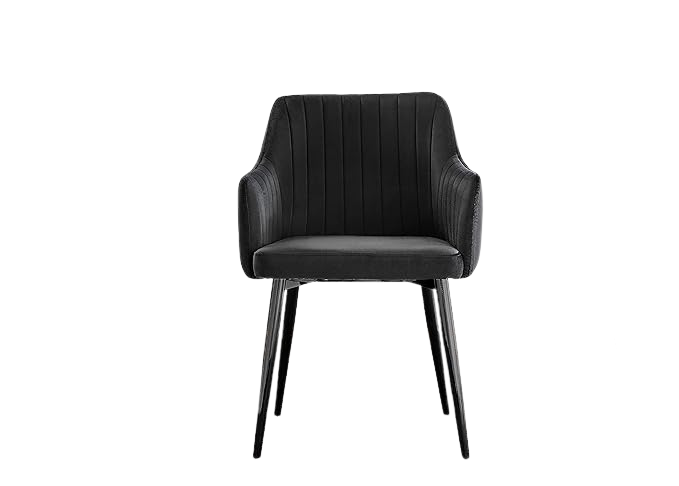Tables are more than just pieces of furniture; they are essential components of spaces where people come together, collaborate, share ideas, and build relationships.
The shape of a table plays a pivotal role in shaping these interactions and influencing the atmosphere within a room. This influence goes beyond the physical arrangement of seats; it delves into the very psyche of those seated around it.
In this exploration of table shapes, we delve into the psychology behind the design. We discover how round tables symbolise inclusivity and engagement, while rectangular tables reinforce hierarchy and formality. We also explore the versatility of oval tables in balancing hierarchical and collaborative dynamics, and the innovative potential of modular and custom-shaped tables in shaping room dynamics. Additionally, we delve into the profound psychological impact that the choice of table shape can have on the desired atmosphere and dynamics of a space.
As we navigate through the various table shapes, we gain insights into the power of design to foster equality, encourage collaboration, optimise efficiency, or uphold formality. Each shape tells a unique story, creating an environment that aligns with its intended purpose. So, join us on this journey as we uncover the hidden dynamics that table shapes bring to life, shaping not only the way we sit but also the way we think, interact, and collaborate.
Round Tables: Fostering Equality and Collaboration
Round tables have a rich history of symbolising equality and inclusivity in various cultures and settings.
Their design is a testament to the power of physical space in shaping social interactions and promoting a sense of unity among participants.
One of the key features of round tables is their elimination of hierarchical structures. Unlike rectangular or square tables with designated head positions, round tables offer each participant an equal footing. This lack of hierarchy sends a powerful message that all voices are valued equally, and no one person holds a superior position. This fundamental principle of equality fosters an environment where everyone feels heard and respected.
The democratic nature of round tables is particularly advantageous in situations where collaboration is crucial. In professional settings, team meetings around a round table often result in more productive and creative discussions. The absence of a head position encourages team members to share their ideas openly without feeling constrained by the hierarchy. As a result, diverse perspectives can emerge, leading to innovative solutions and a stronger sense of teamwork.
Round tables are also well-suited for discussion groups and educational settings. In classrooms, students sitting around a round table can engage in more interactive and inclusive debates. This arrangement encourages active participation and ensures that no student feels side-lined or disconnected from the learning process. It promotes a sense of camaraderie and intellectual exchange among peers.
In family gatherings and social events, round tables offer an excellent platform for open and inclusive communication. Relatives and friends can engage in lively discussions, share stories, and strengthen their bonds without anyone being excluded. The circular layout ensures that everyone can make eye contact and interact freely, fostering a warm and inviting atmosphere.
The physical layout of round tables also enhances the flow of ideas and social dynamics. Participants can easily see and hear one another, leading to more natural conversations and exchanges. This design element promotes a sense of community and connectedness, ultimately contributing to the success of any gathering.
In summary, round tables serve as powerful tools for fostering equality, collaboration, and inclusivity. Whether in professional, educational, or social contexts, their circular design creates an environment where all voices are heard, hierarchies are minimised, and relationships are strengthened through open and free-flowing communication. Embracing the concept of round tables can be a symbol of the commitment to equality and collaboration in various aspects of life.

Square and Rectangular Tables: Structured Interaction and Efficiency
Square and rectangular tables are versatile and well-established choices in various settings, each offering its unique advantages in promoting structured interaction and efficiency.
-
Structured Interaction:
-
Formal Meetings and Dining: Rectangular tables, in particular, excel in formal settings where a clear hierarchy or a head of the table is preferred. This seating arrangement can be particularly useful for business meetings, where someone needs to lead the discussion or presentations. The layout implies a clear structure and order, helping maintain focus and direction during important conversations.
-
Enhancing Order: Square and rectangular tables inherently convey a sense of order and organisation. This can be beneficial in educational settings, such as classrooms or lecture halls, where a teacher or presenter may need to maintain control and structure throughout a lesson or presentation. Students or audience members can easily follow the direction and hierarchy established by the table's shape.
-
-
Efficiency and Space Utilisation:
-
Space Optimisation: Square and rectangular tables are space-efficient in certain room layouts. They can be pushed against walls or positioned in the centre of a room, making them suitable for both large and small spaces. This flexibility allows for more efficient use of available space, making them ideal for conference rooms, dining areas, or office workstations.
-
Structured Pathways: The linear shape of rectangular tables can create structured pathways for movement and interaction within a room. This can be advantageous in office settings, as it helps delineate workspaces, guiding employees and visitors along designated routes. It also aids in creating a sense of order and organisation in shared workspaces.
-
Maximising Seating Capacity: Rectangular tables, especially when extended, can accommodate more people in a linear fashion, which is particularly useful in banquet halls, cafeterias, or conference rooms. This seating arrangement maximises the use of available space and ensures that a larger number of participants can be accommodated comfortably.
-
-
Versatility:
-
Combining Shapes: Square and rectangular tables can easily be combined to create larger seating arrangements. This flexibility allows for customisation based on the specific needs of the event or space. For instance, long rectangular tables can be combined to create a U-shaped arrangement for presentations or discussions.
-
Adaptable Settings: These tables can be adapted to various purposes. In a dining room, they provide a formal and organised layout for meals. In a conference room, they offer a structured environment for meetings and presentations. Their adaptability makes them suitable for diverse settings, ensuring that they remain a popular choice in both professional and personal contexts.
-
In conclusion, square and rectangular tables play a pivotal role in promoting structured interaction and efficiency across different environments. Their ability to create clear hierarchies, optimise space utilisation, and provide versatile seating arrangements makes them valuable assets in settings ranging from formal boardrooms to casual dining rooms. Square and rectangular tables offer a balance between structure and functionality, ensuring that they continue to be fundamental pieces of furniture in various social and professional contexts.

Oval Tables: Blending Hierarchical and Collaborative Dynamics
Oval tables, with their unique blend of round and rectangular characteristics, offer a distinct and versatile seating arrangement that balances hierarchical and collaborative dynamics.
This shape is not only aesthetically pleasing but also practical in various settings, making it an excellent choice for specific purposes:
-
Hierarchical Structure with Inclusivity:
-
Defined Head: Oval tables maintain a hierarchical structure by designating a head of the table. This head position is typically placed at one of the narrow ends of the oval. This setup is advantageous in formal meetings or gatherings where a leader, host, or speaker needs a prominent position. It ensures that the focus remains on the person in charge.
-
Encouraging Engagement: Unlike rectangular tables where those at the far ends may feel distant or excluded, the rounded corners of oval tables soften the table's presence. This design feature encourages more engagement from individuals seated at the ends. People at the farthest points can easily participate in discussions and maintain eye contact with others, fostering a sense of inclusion and participation.
-
-
Adaptability to Room Layouts:
-
Elongated Rooms: Oval tables are particularly well-suited for elongated rooms where a rectangular table may feel too rigid or obstructive. The elongated shape of an oval table complements the room's dimensions and creates a more fluid layout. This arrangement ensures that everyone seated around the table has a clear view of the central area, making it ideal for conferences, presentations, or collaborative workspaces.
-
Improved Circulation: Unlike rectangular tables with sharp corners that may hinder movement around the table, oval tables have rounded edges. This design feature allows for more natural and efficient movement. People can easily walk around the table, serve food, or access their seats without encountering obstacles, contributing to a smoother flow of activity.
-
-
Accommodating Larger Groups:
-
Scalability: Oval tables are adaptable to different group sizes. They can comfortably seat a small group for an intimate discussion or expand to accommodate larger gatherings without feeling overcrowded. This scalability is advantageous in various settings, from intimate family dinners to corporate conferences.
-
Enhanced Interaction: The curvature of the table's shape promotes interaction among participants. It encourages a sense of unity and connectedness, as everyone can engage with each other more easily. This feature is especially valuable in situations where collaboration, brainstorming, or group discussions are key components.
-
-
Aesthetic Appeal:
- Elegant Design: Oval tables often exude a sense of elegance and sophistication. Their unique shape can enhance the overall aesthetics of a room, making them a popular choice for formal dining rooms, executive boardrooms, and upscale events. The balanced combination of curves and lines lends an attractive and harmonious visual element to the space.
In summary, oval tables strike a harmonious balance between hierarchical and collaborative dynamics, making them suitable for a wide range of environments. Their ability to accommodate both structured leadership and inclusive engagement, adapt to room layouts, and facilitate interaction makes them a versatile choice for various occasions and settings. Oval tables not only serve practical purposes but also contribute to the overall ambiance and aesthetics of the space they occupy.

Modular and Custom Shapes: Versatility and Creativity
Modular and custom-shaped tables represent a cutting-edge approach to furniture design, offering unmatched versatility and creativity in shaping room dynamics and interactions.
These tables are revolutionising the way spaces are utilised and tailored to meet the unique requirements of different activities and groups. Here are some key aspects of their versatility and creativity:
-
Adaptive Configurations:
-
Hexagonal Pods: Hexagonal tables, configured as pods, are perfect for collaborative workspaces. They facilitate teamwork by allowing multiple individuals to sit together, fostering face-to-face interaction and idea sharing. These modular setups are often equipped with integrated power outlets and technology support, making them ideal for modern work environments where connectivity and collaboration are essential.
-
Crescent Shapes: Custom crescent-shaped tables are designed to blend presentation and group interaction seamlessly. They are particularly useful in seminar settings where there is a need for a central focus, such as a presenter or screen, while also encouraging group discussions and participation. The curved shape provides an inclusive seating arrangement, ensuring that all participants feel engaged in the event.
-
-
Tailored Interaction Styles:
-
Encouraging Interaction: Custom-shaped tables can be specifically designed to encourage certain types of interaction. For instance, circular or elliptical tables promote open discussions and equal participation, making them ideal for brainstorming sessions or group therapy settings. These tables eliminate any sense of hierarchy and create a sense of unity among participants.
-
Flexible Arrangements: Modular tables can be reconfigured easily to adapt to changing needs. Whether you need a large rectangular setup for a board meeting, individual workstations for a training session, or smaller discussion circles for breakout sessions, modular tables allow for quick and effortless adjustments to cater to different activities and group sizes.
-
-
Technology Integration:
-
Optimised for Technology: In today's tech-driven world, custom-shaped tables can be designed with technology integration in mind. This includes built-in power outlets, USB ports, cable management systems, and even interactive touchscreens. These features enhance productivity and connectivity during meetings, presentations, and collaborative sessions.
-
Versatile Connectivity: Modular tables can support various technology setups, from video conferencing equipment to multimedia displays. This adaptability ensures that the tables are well-suited for both in-person and virtual meetings, accommodating the evolving needs of hybrid work environments.
-
-
Space Utilisation:
-
Maximising Space: Custom shapes can be tailored to optimise space utilisation. Irregularly shaped rooms or areas with unique architectural features can benefit from tables designed to fit seamlessly into the available space. This not only makes the room aesthetically pleasing but also maximises the functionality of the area.
-
Multifunctional Spaces: In settings where space needs to cater to various activities and group sizes, modular tables shine. Their adaptability allows spaces to transform from lecture halls to collaborative workspaces, conference rooms to training centres, and more, all with minimal effort.
-
-
Creative Design Aesthetics:
- Visual Appeal: Custom-shaped tables provide an opportunity for creative and unique design aesthetics. They can be crafted from a variety of materials and finishes to match the overall theme and décor of a room, enhancing its visual appeal and contributing to a cohesive and inviting atmosphere.
In conclusion, modular and custom-shaped tables are at the forefront of modern furniture design, offering limitless possibilities in shaping room dynamics and interactions. Their adaptability, technology integration, and ability to tailor spaces to specific needs make them invaluable assets in multifunctional environments, from offices and educational institutions to event venues and collaborative workspaces. As our needs and spaces continue to evolve, these tables are poised to play a central role in optimizing our interactions and enhancing the functionality of our surroundings.

The Psychological Impact
The psychological impact of the shape of a table is a subtle but influential aspect of room design that can significantly shape the atmosphere and dynamics of any gathering or workspace.
Understanding these psychological effects is crucial when choosing the right table shape to achieve specific goals or create a particular environment.
-
Round Tables: Fostering Inclusivity and Engagement:
-
Inclusivity: Round tables, with their lack of defined head positions and equal seating, create an immediate sense of equality among participants. This shapes the perception that all voices are valued equally, fostering an inclusive environment where everyone feels involved and heard. As a result, round tables are ideal for situations where collaboration, open communication, and a sense of belonging are essential, such as team meetings, brainstorming sessions, or support groups.
-
Engagement: The circular layout of round tables encourages face-to-face interactions and eye contact among participants. This design element naturally promotes engagement and encourages people to communicate openly and freely. The absence of sharp corners also contributes to a more relaxed and less formal atmosphere, which can be conducive to creative thinking and social bonding.
-
-
Rectangular Tables: Reinforcing Hierarchy and Formality:
-
Hierarchy: Rectangular tables, especially those with a clearly defined head, reinforce hierarchical structures. The placement of a leader or authority figure at the head of the table sends a clear message about power dynamics and leadership roles. This can be advantageous in formal settings like board meetings or executive dinners, where a structured and authoritative environment is desired.
-
Formality: Rectangular tables are often associated with formal and structured interactions. Their sharp corners and linear layout provide a sense of order and direction. This formality can set the tone for serious discussions, decision-making, and presentations. In educational settings, such as classrooms or lecture halls, rectangular tables can help maintain a sense of discipline and organisation.
-
-
Choosing the Right Table Shape for Desired Atmosphere and Dynamics:
-
Creativity: If the goal is to encourage creativity, innovation, and open exchange of ideas, round tables are generally the preferred choice. They eliminate hierarchical barriers and create a more relaxed and open atmosphere, where participants are more likely to think outside the box and share their thoughts freely.
-
Collaboration: Round tables are also excellent for fostering collaboration and teamwork. When the emphasis is on collective problem-solving or group projects, the circular layout ensures that everyone is actively engaged and contributing to the discussion.
-
Efficiency: For meetings that require structure and efficiency, rectangular tables are well-suited. They help establish clear leadership and direction, making them suitable for decision-making meetings, presentations, or lectures.
-
Formality: In formal settings where respect for authority and adherence to established protocols are essential, rectangular tables reinforce the necessary hierarchical structure and formality.
-
In conclusion, the shape of a table goes beyond mere aesthetics and seating arrangements; it has a profound psychological impact on the atmosphere and dynamics of a room. Understanding how different table shapes influence perceptions of equality, hierarchy, engagement, and formality is essential when designing spaces for specific purposes. By selecting the appropriate table shape, you can effectively set the tone, promote the desired interactions, and create an environment that supports your objectives, whether they involve creativity, collaboration, efficiency, or formality.

Conclusion
In the world of interior design and space planning, the choice of table shape emerges as a powerful tool for shaping human behaviour and the dynamics of social interactions.
From the egalitarian embrace of round tables to the authoritative presence of rectangular ones, each shape carries a message that resonates with the objectives of a space or gathering.
Understanding the psychological impact of table shapes allows us to make more deliberate choices when setting up our spaces. Whether it's fostering inclusivity and engagement in a team meeting, upholding hierarchy and formality in a boardroom, striking a balance between hierarchy and collaboration in an oval-tabled seminar, or harnessing the boundless versatility and creativity of modular and custom shapes, the table becomes a silent conductor of the desired atmosphere.
As we continue to adapt to evolving work environments, educational settings, and social gatherings, the significance of table shapes only grows. It is a reminder that every element in our environment, even the seemingly mundane, holds the power to influence our thoughts, behaviours, and interactions. In the end, the shape of a table is not just a matter of aesthetics or practicality; it is a key player in the symphony of human connections and the orchestration of ideas, making it an indispensable consideration in the design of spaces that truly serve our needs and aspirations.


